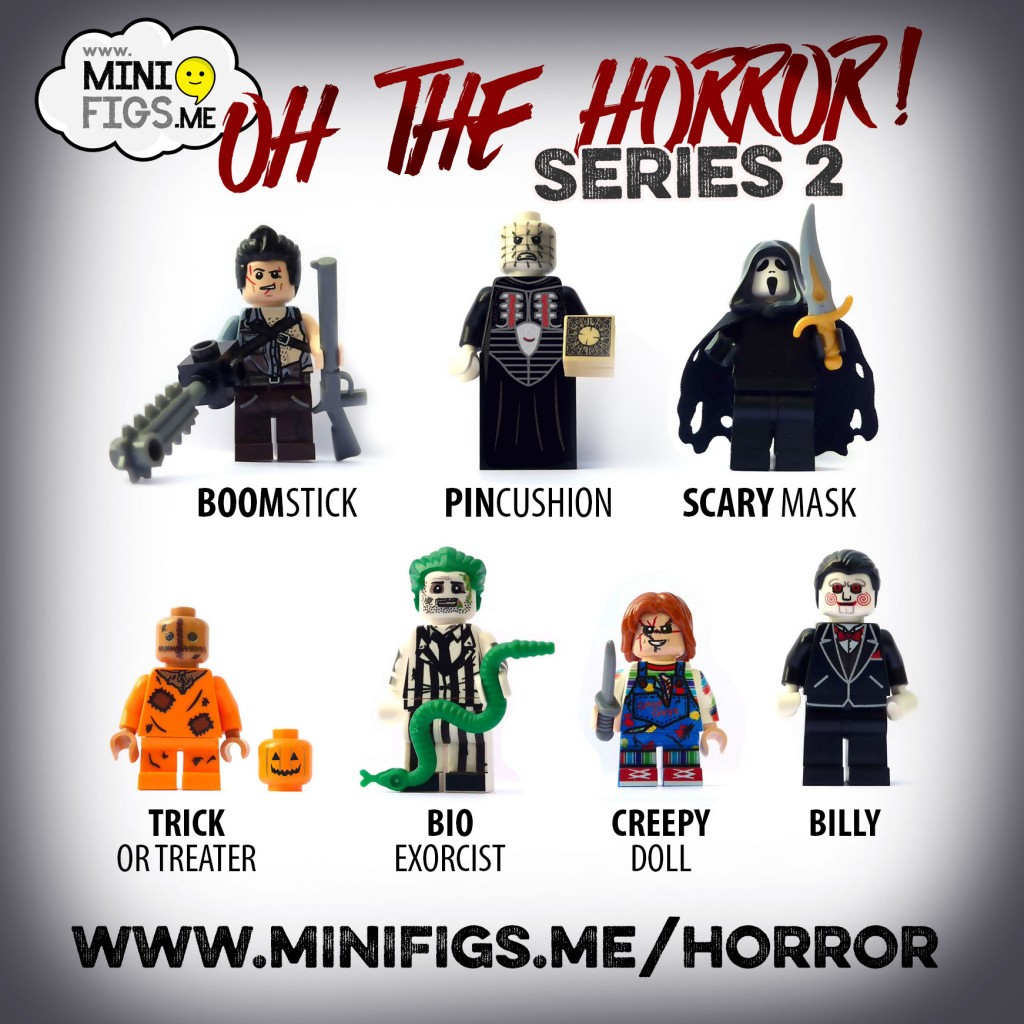
During the Industrial Revolution, Sheffield was one of the U.K.’s leading centers of manufacturing. Today, the steelworks are largely gone, but on the city’s outskirts a smaller scale revolution has transformed a quiet 1960s terraced house into a mini-manufacturing empire.
This is the home of Nick and Caroline Savage, the co-founders of Minifigs.me: two canny customizers who have turned their love of all things Lego into a full-time career.
In the process they’ve brought the world Firefly and Apollo 13 minifigs, learned more about industrial printing than they ever dreamed of, and picked up celebrities like Ashton Kutcher and Robbie Williams as fans.
Here’s their story.
“Not enough people have miniature Lego versions of themselves or their favourite celebrities,” reads the blurb on Nick and Caroline’s website. “We aim to rectify that by making them for you.”
 Minifigs’ customization business started life several years ago when wife Caroline rediscovered Lego after a period of non-fandom. On a whim, she bought a big box of used Lego on eBay, and before long the couple’s Sheffield home was full of unopened sets. Husband Nick says initially he didn’t know what to make of his wife’s new interest — but that it didn’t take long to be convinced.
Minifigs’ customization business started life several years ago when wife Caroline rediscovered Lego after a period of non-fandom. On a whim, she bought a big box of used Lego on eBay, and before long the couple’s Sheffield home was full of unopened sets. Husband Nick says initially he didn’t know what to make of his wife’s new interest — but that it didn’t take long to be convinced.
“All it took was a few Star Wars sets landing on the doorstep, and I was in,” he laughs.
The germ behind the couple’s business took place on a lazy Sunday afternoon in 2011. As a joke, Nick and his nephew decided to create a customized minifig of Caroline, wearing her beloved roller derby gear. “We did it with paint,” Nick says. “It was a lot of fun, but it looked awful. It was just terrible.”
Caroline accepted the gift graciously, but then started researching online for more professional customization advice. Using the couple’s $50 printer, some decal paper, and a bottle of varnish, the early experiments were promising. In 2012, Nick and Caroline made waves when they posted some designs online — showing unofficial minifigs based on the athletes from that year’s Olympic Games.
Orders flooded in.
“At that point things just exploded,” Nick continues. “The little business we had set up — which we hoped would bring us in a few pounds on a good week — suddenly became an all-hands-on-deck project. We had to call in as many of our friends to help us as we could. Overnight, we had unknowingly started a new career.”
The interest came at just the right time. Lego aside, 2012 was a bad year for Nick and Caroline. In a series of tough blows, Nick lost his job through redundancy, Caroline’s work contract was about to expire, and three very close members of their family passed away unexpectedly.
“It gave us a reason to pour ourselves into something,” says Nick. “We were working 15 hours a day, 7 days a week. It was wonderful to do a job where the entire purpose was just to make people happy, to cheer them up. For the year we were having, that was exactly the right thing to come along.”
 The Lego community rallied round Nick and Caroline. “It was a community I’d not known much about previously, but which turned out to be the most friendly and welcoming community I’ve ever been a part of,” Nick says.
The Lego community rallied round Nick and Caroline. “It was a community I’d not known much about previously, but which turned out to be the most friendly and welcoming community I’ve ever been a part of,” Nick says.
Today, just a few short years on, the couple’s Sheffield home is a hive of activity — with seven employees, a large workshop, and an industrial flatbed printer with a price tag of around $45,000.
New minifigs are designed using Adobe graphics software, and then directly printed onto blank Lego figures using a process in which the ink is dropped onto the figures as a mist and cured with an ultraviolet light. It’s a different method of printing to the one Lego uses, but one which has a couple of key advantages — such as increased durability, and the possibility of printing subtle 3D elements such as raised lace on shirts.
The mode of printing isn’t the fastest, however. Minifigs frequently require six or seven separate phases of printing before they’re finished, and because of the time this takes a batch of 70 minifigs can take almost a whole working day to complete.
Of all the creations Nick and Caroline have created, Nick tells Power of the Brick that his favorites are the Firefly and horror minifigs: both of which have proven to be top-sellers.
And that’s not just with your everyday Lego fans, either.
“We’ve had comedians, actors, filmmakers, astronauts, you name it,” he says. “Recently Ashton Kutcher’s family asked us to make one of him for a gift. It’s amazing the kinds of people who this appeals to. I’ve spoken with so many of my heroes doing this.” At concert, Robbie Williams pulled out one of Minifigs’ figurines and began talking to it.
For self-professed “space geek” Nick, though, the biggest honor of all is the fact that several of his minifigs aren’t even on Earth anymore.
“Three of them are on the International Space Station,” he says. “Could life get any better than that? I’m so grateful for how things have worked out.”




